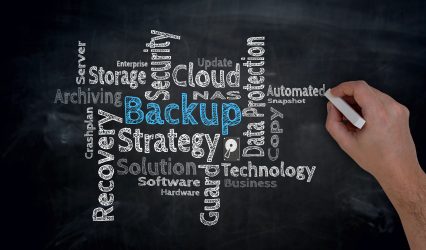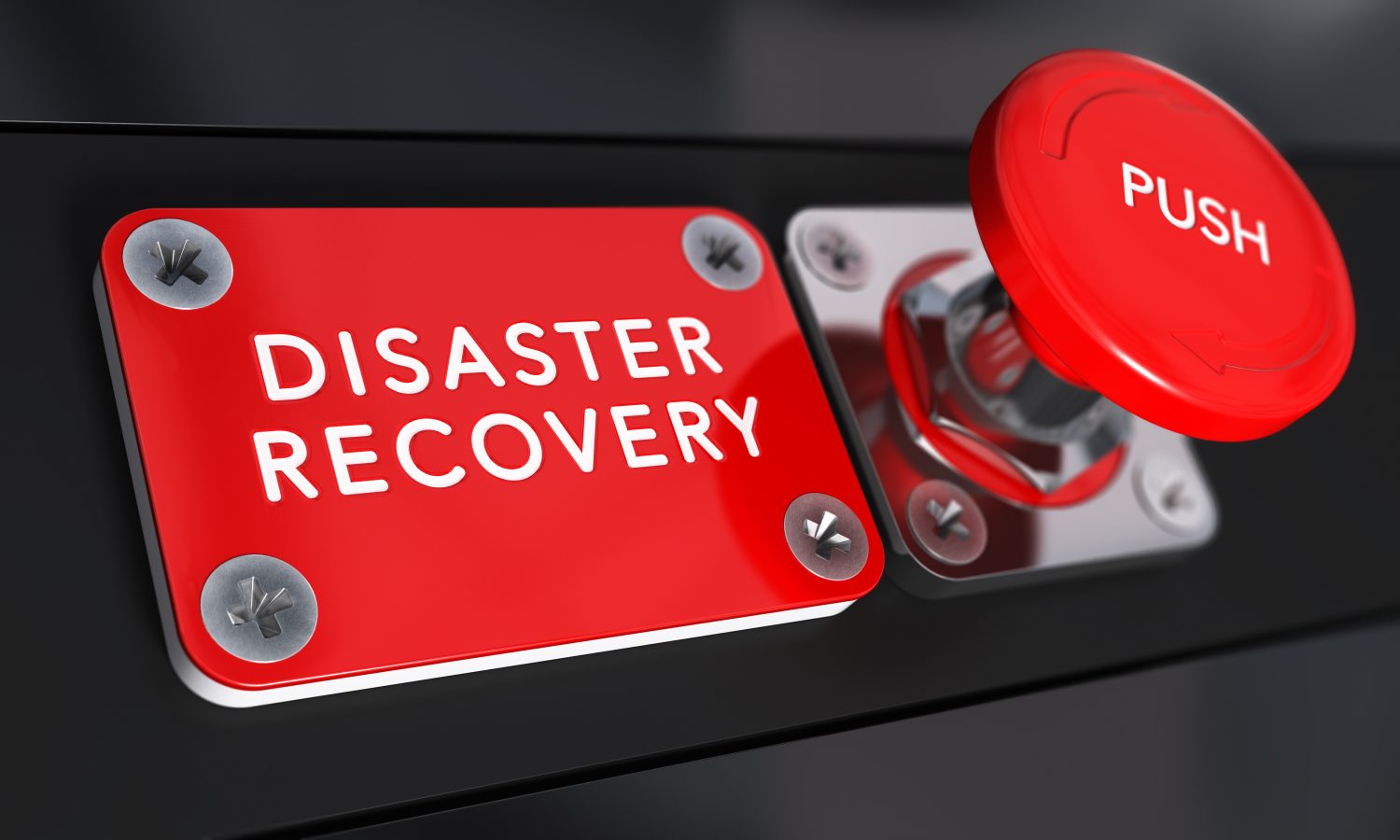July 25, 2018 by Siobhan Climer
Let’s start with some definitions:
Disaster Recovery (DR): A strategic security planning model that seeks to protect an enterprise from the effects of natural or human-induced disaster, such as a tornado or cyber attack. A DR plan aims to maintain critical functions before, during, and after a disaster event, thereby causing minimal disruption to business continuity.
Backup: The copying of data into a secondary form (i.e. archive file), which can be used to restore the original file in the event of a disaster event.
As you can see, they aren’t synonyms. And you can’t ignore either one. Disaster recovery and data backups go hand in hand to support business continuity. However, recognizing the difference between disaster recovery and backups is essential to building a resilient business strategy.
So, What’s The Difference?
Backups are the copies of essential files that enable a full restore. While that may sound straightforward, and it is in theory, the actual process can be quite complicated. First off, there are different ways to manage backups. In fact, 49% of businesses utilize multiple backup solutions at the same time (1). What are these different types of backup solutions?
 Full Backup
Full Backup- Incremental Backup
- Differential Backup
- Mirror Backup
- Local Backup
- Offsite Backup
- Online Backup
- Remote Backup
- Cloud Backup
- FTP Backup
Phew! Despite being initially overwhelming, using multiple types of backups can be enormously valuable. Just make sure you know where each application is stored.
In addition to the different types of backups, the process by which those backups are created can vary. Virtualization now means traditional tape backups are being replaced by replication, snapshots, and live migrations. Snapshots protect data and enable quick restores. Replication tools, like Zerto Virtual Replication 6.0, automate a multi-cloud backup solution. Every backup solution is measured on its recovery point objectives (RPOs) and recovery time objectives (RTOs).
In the end, though, a backup solution is only helpful if you understand the strategy behind it. That’s where disaster recovery comes in.
 The difference between disaster recovery and backups comes down to breadth. Backups or backing up refers to the actual copies or copying of files and data. Disaster recovery (DR), on the other hand, encompasses the full strategy for responding to a disaster event and putting the backups into action. DR is the umbrella under which backups reside. You may have a specific data backup strategy, but responding to a disaster means preparing for a worst-case scenario. Who is in charge of getting applications back online? How will you manage customer relations if there is a data breach? The difference between disaster recovery and backups is about answering these types of questions.
The difference between disaster recovery and backups comes down to breadth. Backups or backing up refers to the actual copies or copying of files and data. Disaster recovery (DR), on the other hand, encompasses the full strategy for responding to a disaster event and putting the backups into action. DR is the umbrella under which backups reside. You may have a specific data backup strategy, but responding to a disaster means preparing for a worst-case scenario. Who is in charge of getting applications back online? How will you manage customer relations if there is a data breach? The difference between disaster recovery and backups is about answering these types of questions.
Creating a disaster recovery strategy means determining application priority, aligning your backup policy with your DR strategy, assigning RTOs and RPOs, and creating a testing and verification protocol. To find out more about DR strategy, check out Disaster Recovery Strategy Explained.
Understanding the difference between disaster recovery and backups comes down to understanding the difference between a solution (backup) and a strategy (DR).
Why You Need A Backup Solution Strategy
 To understand the difference between disaster recovery and backups, let’s unpack what backups are and how to use them. Backups serve to recover data after a loss, usually due to deletion or corruption. 70% of businesses have experienced, or will experience, data loss due to deletion, disk or system failure, viruses, fire, or some other disaster (2). As we mentioned earlier, almost half of all businesses use more than one form of backup solution. That makes sense. You want to backup critical applications and data more completely and frequently than less essential data. Plus, a lot of the systems you use are likely already backed up on the cloud (Office 365, Google Docs, etc.), and may not require additional backups.
To understand the difference between disaster recovery and backups, let’s unpack what backups are and how to use them. Backups serve to recover data after a loss, usually due to deletion or corruption. 70% of businesses have experienced, or will experience, data loss due to deletion, disk or system failure, viruses, fire, or some other disaster (2). As we mentioned earlier, almost half of all businesses use more than one form of backup solution. That makes sense. You want to backup critical applications and data more completely and frequently than less essential data. Plus, a lot of the systems you use are likely already backed up on the cloud (Office 365, Google Docs, etc.), and may not require additional backups.
It is important, though, to have a strategy behind what you choose to backup and how you do it. We recommend creating a written policy document that lays out where your applications – every application – is backed up, the cadence of backups, the lifecycle operations calendar, retention spans, encryption, storage, testing, stacking, and access. To find out more and use our free data backup policy template, check out A Data Backup Policy Template And Strategy For Your Business.
Create A Disaster Recovery Plan
If you recall, the difference between disaster recovery and backups is about strategy versus solution. A DR plan is strategic and encompasses a whole philosophy of thinking. Creating a disaster recovery plan is dependent on completing a risk assessment and business impact analysis that will help you identify critical applications and IT services. Then, you can create your RTOs and RPOs based on your unique environment. Only after completing these initial steps should you begin the process of developing a disaster recovery plan that includes both prevention and response protocols.
We’ve written extensively about how to create a DR plan that is cost-effective and meets your mission-critical needs. Click here for more information on how to write a disaster recovery strategy.
Leverage The Difference Between Disaster Recovery And Backups
The difference between disaster recovery and backups may be clear, but the next step is to leverage those differences to develop a comprehensive DR strategy that includes an effective backup policy, disaster prevention strategies, and response protocols.
Remember, 90% of businesses without a DR plan fail after a disaster. Be prepared by creating a disaster recovery strategy before disaster strikes. Mindsight can help by providing critical assessments, creating and managing a disaster recovery plan, and monitoring your systems for disaster events, both internal and external.
Contact us today to discuss how to implement a disaster recovery strategy that involves a managed backup plan.
Like what you read?
About Mindsight
Mindsight, a Chicago IT services provider, is an extension of your team. Our culture is built on transparency and trust, and our team is made up of extraordinary people – the kinds of people you would hire. We have one of the largest expert-level engineering teams delivering the full spectrum of IT services and solutions, from cloud to infrastructure, collaboration to contact center. Our highly-certified engineers and process-oriented excellence have certainly been key to our success. But what really sets us apart is our straightforward and honest approach to every conversation, whether it is for an emerging business or global enterprise. Our customers rely on our thought leadership, responsiveness, and dedication to solving their toughest technology challenges.
Contact us at GoMindsight.com.
About The Author
Siobhan Climer, Science and Technology Writer for Mindsight, writes about technology trends in education, healthcare, and business. She previously taught STEM programs in elementary classrooms and museums, and writes extensively about cybersecurity, disaster recovery, cloud services, backups, data storage, network infrastructure, and the contact center. When she’s not writing tech, she’s writing fantasy, gardening, and exploring the world with her twin two-year old daughters. Find her on twitter @techtalksio.







